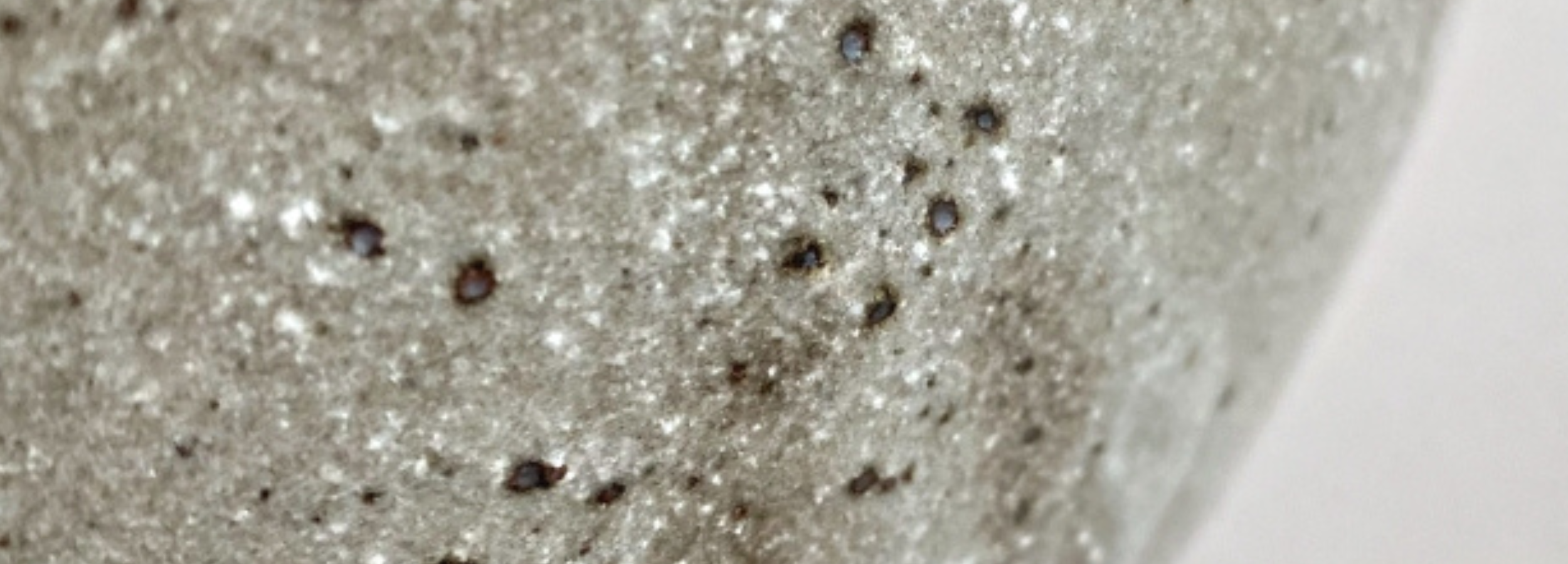Handmade ceramics exhibit a multitude of expressions, including spots, cracks, glaze texture, shades, and uneven shapes.
Each piece carries the essence of the artist's thoughts, giving it a unique personality.
Even when crafted by the same artist, subtle differences in features emerge, emphasizing the nature of handmade ceramics—a quality that sets them apart from mass-produced products.
Here, we will highlight some of the features commonly found in handmade ceramics.
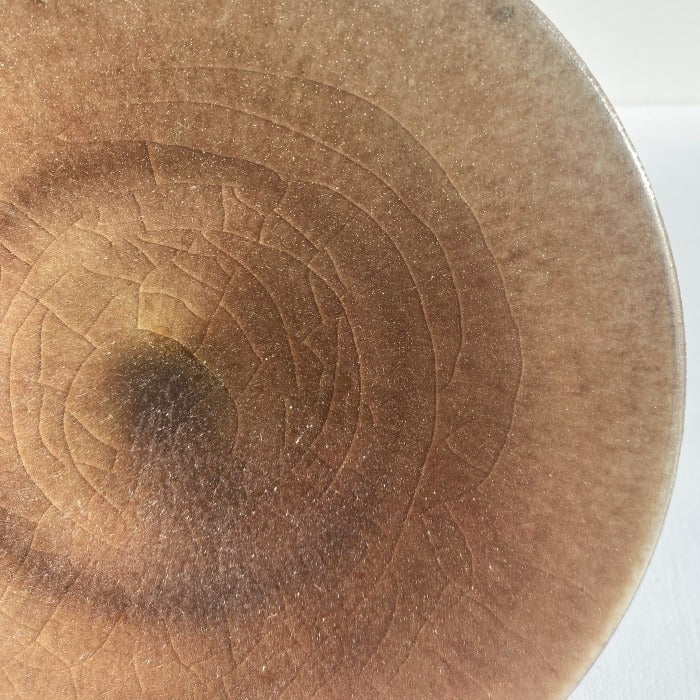
KAN-NYU (CRAZING)
Cracks in the glassy glaze emerge from the varying rates of shrinkage between the clay and the glaze. In Japan, this phenomenon is termed "KAN-NYUU," or crazing. Typically occurring as the wares cool and solidify after firing, these cracks are considered a distinctive outcome in the art of ceramics. Each instance of Kan-nyuu is unique, and some artists intentionally enhance them by adding ink for emphasis.
Importantly, crazing differs from cracks in the base clay and is not a defect, posing no concerns about potential leakage. As you use ceramics displaying crazing, the cracks may acquire color, and the evolving appearance is a matter of personal preference. Some individuals appreciate the refined aesthetic that develops over time.
To preserve the integrity of original finish, it's recommended to seal them before first use. For more detailed care instructions, please visit our care instructions page.
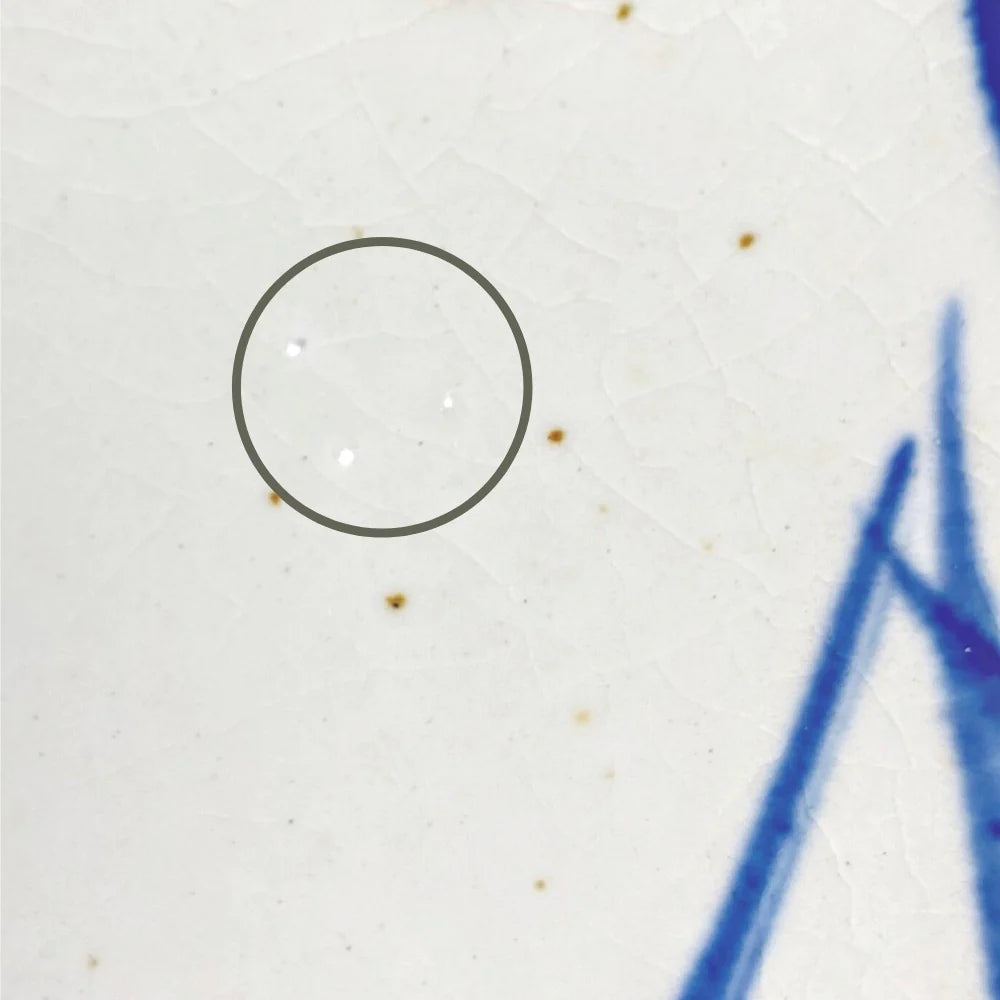
PIN-HOLE
During the firing process in a kiln, any remaining organic matter on the clay or dust on the glaze can combust together, resulting in the formation of small holes known as pinholes. Additionally, the presence of air bubbles, introduced during glaze agitation, can also contribute to the occurrence of pinholes. It is a common occurrence on handmade pottery, and these pinholes represent one of the unique expressions of handcrafted ceramics.
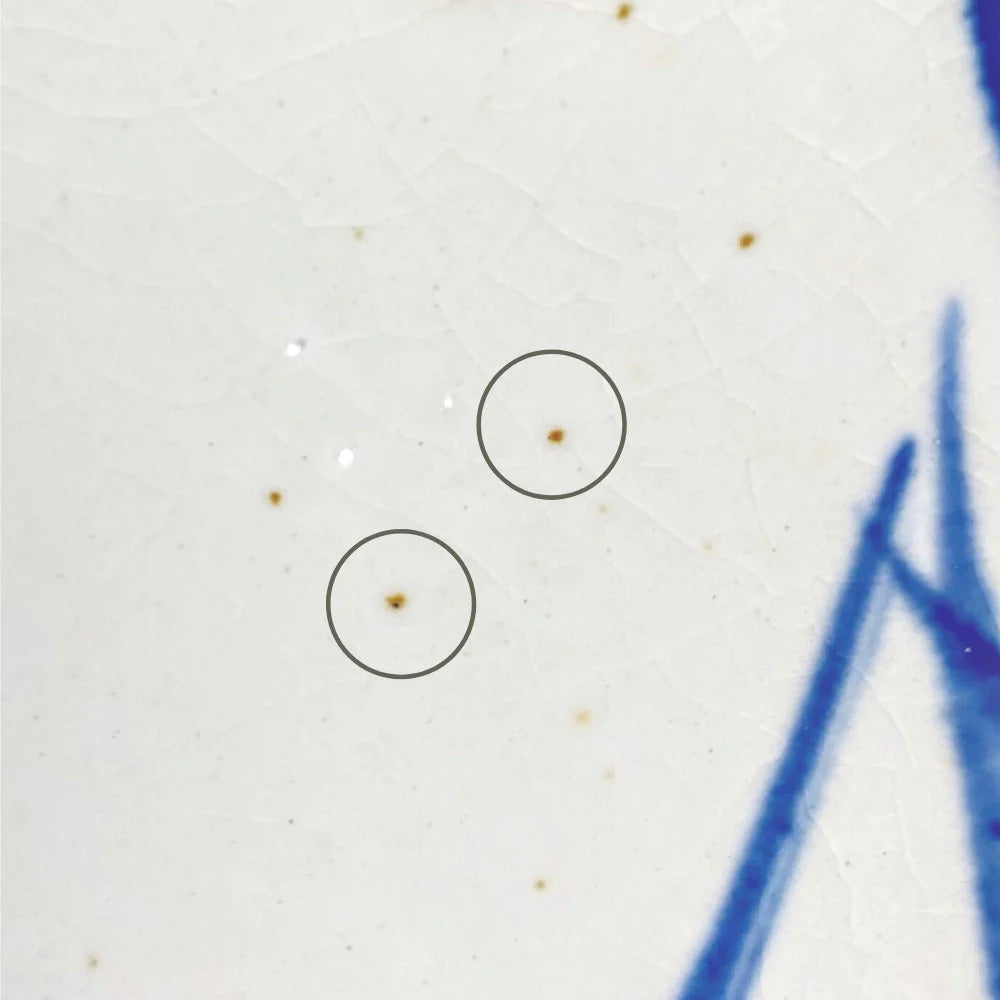
BLACK SPOTS
When firing pottery, iron originally present in the natural clay undergoes oxidation, manifesting as distinctive black spots on the surface of the ceramics. This phenomenon is commonly observed in the works of artists who prioritize the inherent texture of the soil, opting for coarse clay that readily generates iron powder.
These granular black spots serve as a poignant reminder of the earthiness inherent in nature.
Referred to at times as a "mole," they are esteemed as a distinctive and cherished characteristic of the ceramics, contributing to their unique allure.
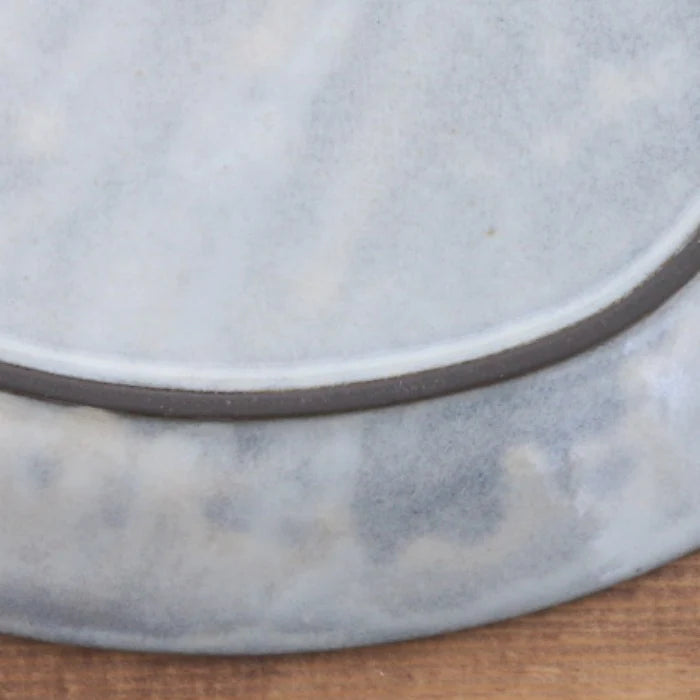
UNEVEN GLAZE
The glaze is carefully hand-applied by our artists/makers, and as a result, the application may be uneven at times. However, the traces of glaze flowing and the pooling of glaze have long been appreciated as the "scenery" of ceramics in Japan.
The ceramics, carefully crafted with the maker's thoughts and sophisticated techniques, are truly one-of-a-kind.
In Japan, we have a saying, 'Ichigo-Ichie,' which means making the most of every moment as a unique encounter that will never be repeated in the same way again. We believe this word perfectly describes handmade ceramics.
As you explore, you'll notice subtle traces of craftsmanship, distinguishing them from mechanically made ceramics. The variations in colour and shape of each piece are unique features that we cherish.
It is a great pleasure to witness the aging of the ceramics, adding to their character over time.
We invite you to discover your own 'Ichigo-Ichie' ceramic at our store and relish in the joy it brings for many years to come.

